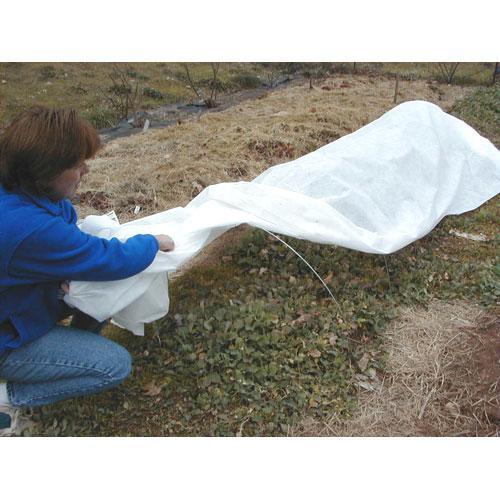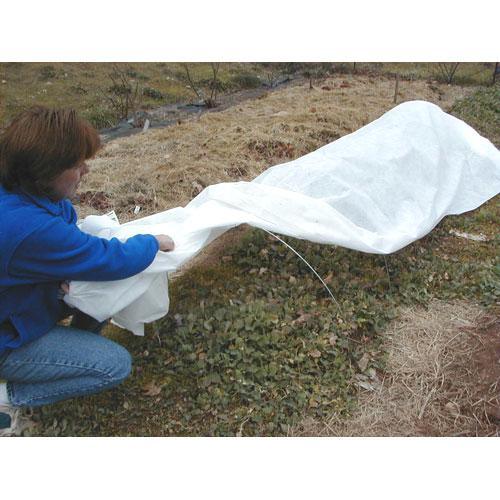How to Choose the Best Floating Row Cover: Floating Row Covers for Pest Control & Frost Protection
If you’re looking for a simple, affordable way to protect plants from pests, frost, and unpredictable weather conditions, floating row covers are one of the most effective tools for every gardener.
These lightweight fabrics create a protective barrier that helps extend the growing season, keep out insects, and shield crops from sun, wind, and cold. Whether you’re growing cool season crops or tender spring seedlings, the right row cover fabric can make all the difference.
What Are Floating Row Covers?
Floating row covers for pest control are breathable, nonwoven fabrics—typically made from spun-bonded polypropylene or polyester—that “float” over your plants without heavy support. They let in sunlight, air, and water while keeping out pests and maintaining more stable temperatures underneath. These covers work well for a variety of uses, from protecting cool season crops in cold weather to deterring insects during warm months.
For example, Agribon AG-19 provides excellent protection against frost and small insects while allowing around 85% light transmission, keeping your plants healthy and productive.
Why Use Floating Row Covers?
Floating row covers offer three key benefits:
1. Pest Control
They serve as a natural barrier against common garden pests like aphids, thrips, beetles, and squash vine borers. Since insects can’t physically reach the plants, gardeners can reduce or even eliminate pesticide use. Floating row covers for pest control are especially effective in the spring and fall, when pest pressure is high.
2. Frost Protection
When temperatures drop, row covers trap heat from the soil, preventing frost damage. Heavier covers, such as Agribon AG-50 or Agribon AG-70, can protect plants from temperatures as low as 24°F. These act like a frost blanket, giving gardeners across the United States the ability to protect crops well into late fall or start them earlier in spring.
3. Sun and Wind Protection
Row covers can also act like a shade cloth, shielding tender transplants from excessive sunlight or wind. Lighter options like Agribon AG-15 allow maximum airflow and light penetration while still offering protection against harsh weather conditions.

Choosing the Right Row Cover Fabric
When selecting the best floating row cover, consider your local climate, plant type, and goals. Here’s how to choose the right row cover material for your needs:
Row Cover Type Light Transmission Best For Example Product Lightweight (AG-15) 90% Pest control, transplants, sun protection Agribon AG-15 Medium-weight (AG-19) 85% Pest control, mild frost protection Agribon AG-19 Heavyweight (AG-30–AG-70) 50–70% Frost protection, extending the season Agribon AG-30, AG-50, AG-70
Pro tip: Always check your local garden frost dates to match the correct row cover weight with your planting schedule.
When to Use Floating Row Covers
Use floating row covers at different times of the year depending on your goal:
- Spring and Fall: Protect new seedlings and cool season crops from frost and early pests.
- Summer: Use lightweight covers as shade to prevent transplant shock and deter insects.
- Winter: Apply heavy row covers or frost blankets for long-term cold protection.
For step-by-step demonstrations, see our videos on Direct Seeding & Frost Protection and Planting Vegetables.

How to Use Floating Row Covers Effectively
1. Install Your Cover
Lay the row cover fabric directly over the plants or drape it over hoops to create space for plant growth. If you’re covering larger beds, use PVC pipe or wire hoops to build a simple support frame. For detailed DIY guides, see our tutorials on How to Build a Low Tunnel Hoop House and How to Make a Hoophouse on a Raised Bed.
2. Secure the Edges
Weigh down the sides with soil, rocks, or landscape staples to prevent wind from lifting the cover. Be sure the fabric is snug but not tight—plants need room to grow underneath.
3. Maintain Airflow and Moisture
Since most covers allow rain and air to pass through, you typically don’t need to remove them for watering. Just make sure your row cover material remains clean and free of tears to maintain its light transmission and protection qualities.
Caring for Row Covers
With proper care, quality floating row covers can last several seasons. After use:
- Gently wash or hose down the fabric.
- Let it dry completely before storage.
- Roll and store in a cool, dry place.
- Inspect for holes or tears before reusing.
By maintaining your garden row covers, you’ll continue to protect plants from pests and frost for years to come.
Shop Floating Row Covers
Ready to get started? Explore our complete collection of floating row covers and frost blankets to find the right fit for your garden.
Final Thoughts
From insect prevention to frost protection, floating row covers are one of the most versatile and reliable tools in gardening. They help protect plants from harsh weather conditions, extend the growing season, and reduce pest damage—all while being reusable and easy to set up.
Whether you’re using a simple PVC pipe tunnel or laying fabric directly over the soil, the right floating row cover can transform your garden into a thriving, resilient space year-round.





3 comments
My husband and I used electrical conduit and created our own “bender” by screwing in 2 inch screws in ply wood along an arc and then bent the conduit. It works very well.
Kathy, all I know of is pipe made of metal, but you will need to have a tool to bend it in order to make a low tunnel. The Agribon is made with spun-bonded polypropylene.
I read a lot about the toxicity of PVC. I have cancer so am trying to reduce any environmental toxicity.
1-Do you know of any tubes that are not made of PVC material?
2- What is the cover fabric made of?
Thankyou.